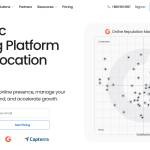Boasting over 255 million page views a day, Wikipedia is currently the seventh most visited website in the world. The free online encyclopedia has grown monumentally in size and renown since its conception in 2001 and is now looked to as a measure of success around the globe. Having a Wikipedia page instantly increases your credibility and elevates your professional image.
Getting featured on Wikipedia is notoriously challenging without guidance. Here are four things you need to get your own Wikipedia page.
1. An Understanding of the Article Guidelines
Wikipedia is known for its extremely strict guidelines around article submission. To create an article that makes it past the editors, you nee to be familiar with the selection criteria. A key factor is notability. To be considered notable by Wikipedia, you must have been referenced on numerous other reputable publications. Wikipedia’s guidelines specify that you cannot include primary sources, such as your company website.
Note that Wikipedia articles, like this individual’s page, must be written in the neutral point of view (NPOV). You can list your achievements, but you also need to include the factual aspects of your brand’s history. Drop the usual promotional tone – it won’t fly on this medium.
Other guidelines to be aware of include conflict of interest, discussed below.
2. Someone Willing to Write About Yo
If you write your own Wikipedia article, the likelihood of your submission being accepted is minimal as this clashes with the conflict of interest guideline. You can’t write the article, but you CAN make it easier for someone else to publish content about you.
If you’ve been mentioned on an already existing page, ‘red-link’ the mention to notify editors that you don’t have a biography on Wikipedia yet. This may attract the welcome attention of a volunteer editor.
Another way to flag the project is to list yourself on the Articles for Creation page. To increase the likelihood of someone taking on the project, prepare a strong list of references for the writer to cite (discussed further in point 3).
3. A Professional Bibliography
At the heart of every Wikipedia page is the reference list. Whether you’re using a freelancer to author your submission or relying on a volunteer editor, they’ll need citations to support their claims. Save them time by collating every reference (digital and otherwise) about you on your personal webpage. Keep the list up to date by setting a Google Alert on your name – this will notify you any time someone publishes a new article featuring you online.
4. A Strong Online Presence
The notoriety criteria and biography mentioned above require you to have a strong online or media presence. Articles that showcase or mention you and your business form the building blocks of your credibility.
If your brand is still in its infancy, approach notable publications with pitches for sponsored posts. Target big names in your industry for maximum impact, e.g., Gizmodo for your tech startup or Bon Appetite for your personal chef brand.
Marketing a product/service? Reach out to influencers that match your brand values and suggest a collaboration, like a free sample in exchange for a video or post.
If you’ve already got industry connections, organize an article exchange. You showcase them on your website, and they feature you on theirs. By collaborating, you can both increase your notability and circumvent Wikipedia’s primary source restrictions.
Perhaps the biggest ‘must-have’ to get a Wikipedia page is patience. Building a strong enough brand to meet Wikipedia’s stringent notability requirements takes time and dedication. So does finding a suitable writer! Follow the guidelines above to drastically improve your chances of getting your article published.
Lynn Martelli is an editor at Readability. She received her MFA in Creative Writing from Antioch University and has worked as an editor for over 10 years. Lynn has edited a wide variety of books, including fiction, non-fiction, memoirs, and more. In her free time, Lynn enjoys reading, writing, and spending time with her family and friends.















